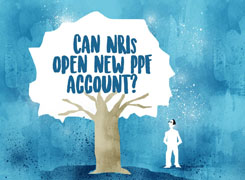
Sanjeev Govila
Financial Planner
458 Answers | 88 FollowersFollow
He has over 12 years of experience in financial planning and is a SEBI certified registered investment advisor; he is also accredited with AMFI and IRDA.... more
Answered on Apr 08, 2024

Thank you very much for your interest in our company. We are bound by our company's laid down policies and would not deviate from them. Hence, we would not be able to take it ahead with you if you do not have an Indian armed forces family connection please. Thanks again.
Answered on Apr 02, 2024

However, your allocation in equity-oriented investments is minimal. We recommend allocating funds equivalent to three years of expenses into debt-oriented schemes, while the remainder should be invested in equity and/or hybrid combination for potential capital appreciation.
We advise consulting a financial advisor for personalized guidance tailored to your goals, risk tolerance, and time horizon. He/She can assist in setting up tax-efficient systematic withdrawal plans (SWPs) to meet monthly needs while allowing your investments to grow.
Answered on Apr 02, 2024

Utilize the Double Taxation Avoidance Agreement to avoid being taxed twice. When applying for a home loan in India, banks may request for proof of income and tax returns, so filing in India could support your application. Seek advice from a tax advisor well-versed in both countries' tax laws to ensure compliance and maximize benefits.
Answered on Apr 02, 2024

Without detailed financial information such as current investments and loans, I cannot provide an exact monthly investment figure for your retirement needs.
Assuming retirement in 10 years from now after children's education and other goals have finished or been catered for, you should aim to accumulate a corpus of at least Rs 4-5 crores. To achieve this, invest 2-3 lakhs monthly in SIPs. However, in the absence of all other data, this is a very rough figure.
Regularly review and adjust investments to stay on track towards your retirement goals. Consulting a financial advisor for personalized guidance based on your specific financial situation is recommended.
Answered on Mar 28, 2024

Also, you can consider consulting with a financial advisor for personalized advice based on your specific situation.
Answered on Mar 28, 2024

Increase income through additional work, cut expenses, and seek advice from financial counsellors if needed. Stay persistent, celebrating small victories, and remaining focused on long-term financial goals. With dedication and a well-structured plan, it's possible to gradually overcome debt and work towards a more stable financial future.
Answered on Mar 28, 2024

Prioritize your debts based on factors such as interest rates and consequences of non-payment. Focus on paying off high-interest debts first while making minimum payments on others.
It is important to file your tax returns. Failing to file can result in penalties and interest charges. It is advisable to seek guidance from an income tax professional who can provide you a personal solution.
Answered on Mar 28, 2024

It's advisable to assess your risk tolerance with a financial advisor to ensure an appropriate asset allocation. Additionally, consider diversifying into gold or other asset classes depending on risk appetite. By implementing these strategies, you can enhance your financial resilience and pursue long-term wealth accumulation effectively.
Answered on Mar 28, 2024

Although, in the recent past these funds have delivered decent returns supported by the ongoing market rally, you should be ready for the uncertain volatilities and may witness negative returns in the short term.
Secondly, funds overlapping in a similar category increases the concentration risk of the portfolio and returns may be impacted during market stress. Hence, it is recommended to diversify the portfolio among categories & across the market capitalization.
The investment horizon in mid & small cap should be of 7+ years for decent returns.
As you have mentioned your investment horizon as 15 years, these funds could be the suitable investment but in the absence of any idea of your risk appetite, it is difficult to assess that. Therefore, selection of funds should be based on your risk appetite, investment horizon and your goals not on the basis of their performance.
Answered on Mar 28, 2024

Index fund is replica of the index and it passively managed by the fund manager. They are designed to match the market, not outperform it. So, if you're looking for explosive growth, an actively managed fund might be a better option.
As you have investment only in HDFC AMC, we suggest you to diversify your investment across the AMCs (Asset Management Company). It will help you to reduce the Concentration Risk in your portfolio and provide the necessary diversification to your portfolio.
Answered on Mar 28, 2024

Currently, you have three mid-cap funds in your portfolio i.e. Mirae Asset Mid Cap Fund, Kotak Emerging Equity Fund, and Motilal Oswal Mid Cap Fund.
Motilal Oswal Mid Cap Fund is currently investing only in 30 stocks which makes it focused in nature. The market surge has helped the fund achieve strong returns over the last year, but these returns have not been steady and have not had a particularly strong track record. Thus, we advise you to discontinue making investments in this fund.
You have investments in two Mirae AMC funds in your portfolio. We advise you to diversify your investments among different AMCs to lower the risk of concentration and to take advantage of the various investing strategies that AMCs follow.
We suggest you to continue to invest in Kotak Emerging Equity Fund since the fund has a good track record, past performance and it is well diversified as compared to its peers.
Answered on Mar 28, 2024

Since you said that you have lost a significant amount of money through online trading, there will be no tax obligation. Tax will only be payable at the time the capital gains are booked. However, the platform will charge certain fees in order to execute the transaction.
If they continue to ask for taxes, you may register a complaint with supporting documents, bring up the matter of online fraud to the cybercrime cell online. Also, inform the bank where the money was transferred.
You may then initiate the following legal actions:
1. Report the platform and complaint registered with regulatory body (Stock and Exchange Board of India), so that the platform will not impact other investors.
2. Keep all the details securely with you like communications with the platform.
3. Money transfer receipts.
4. Cybercrime complaint copy.
Answered on Mar 28, 2024

We should have at least a time horizon of 7-10 years to gain consistent returns from small cap categories. Small cap funds carries a higher risk compared to most other categories and it is not recommended to introduce a fund which may witness the higher volatility along with negative returns in short term at this stage of your life.
If your risk appetite allows you to invest in this fund, we suggest you to invest not more than 10-15% of your overall portfolio for diversification purpose.
Secondly, SIPs will take more time to get stable and average itself as what we have witnessed in the past.
Hence, it is recommendable to invest in a well-diversified portfolio based on your risk appetite and goals.
Answered on Mar 28, 2024

• Benefits: NPS offers tax benefits and a guaranteed pension post-retirement.
• Downsides: Lock-in period: Most of your contribution is locked until 60, limiting flexibility. Lower potential returns compared to some aggressive investment options.
Worth considering if:
• You already have major part of your retirement corpus built and want tax benefits and a pension.
• You have a long-life expectancy and are comfortable with a lock-in period.
Alternatives: Explore options like mutual funds that offer more flexibility and potentially higher returns.
Talk to a financial advisor to assess your specific situation and determine if NPS aligns with your retirement goals.
Answered on Mar 28, 2024

While calculating above computation, we have taken the rate of return @12% p.a.
Your portfolio is more aligned towards small cap category. We suggest you to take some exposure towards Large Cap & Hybrid Fund categories too. Proper diversification helps the portfolio to generate & preserve the wealth in the long-term investment horizon.
For achieving the goal of Rs 5 Cr, we suggest you to increase your SIPs by Rs 95,000/- or invest the bulk (one time) Rs 70 Lakhs/-. You could also have a combination of the same and aim to increase your SIPs over the years as you get more financial ability to do so.
Note: We have assumed the monthly investment of Rs 1.25 Lakhs, while providing our recommendation.
Answered on Feb 11, 2024

To build up that kind of a corpus, you need to invest approx. Rs 53K pm from now onwards per month in an instrument like equity which gets you about 12% annualised returns.
Obviously you cannot spare that much right now. So start with whatever you can now and aim to increase the monthly amount regularly, at least once a year as time passes.
Answered on Feb 10, 2024

Answered on Feb 10, 2024

Emergency Fund: Set aside 3-6 months of living expenses in a high-yield savings account or liquid fund.
Debt Repayment: Pay off any high-interest debt to reduce financial liabilities.
Diversified Investment Portfolio:
1.Equity Investments: Invest in a mix of large-cap, mid-cap, and small-cap equity mutual funds or ETFs.
2.Debt Investments: Consider debt mutual funds, government bonds, corporate bonds, or fixed deposits for stable returns.
3.Gold Investment:Gold is considered a traditional safe-haven asset and a hedge against inflation and economic uncertainty.You can invest in gold exchange-traded funds (ETFs), gold mutual funds, SGBs.
4.Retirement Planning: Allocate funds to retirement-specific instruments like EPF, PPF, NPS, or retirement-focused mutual funds.
Professional Advice: Consult with a financial planner or advisor to create a customized investment plan aligned with your financial goals and risk tolerance.
Regularly review and adjust your investment portfolio to stay on track with your financial objectives and adapt to changing market conditions.
Answered on Feb 10, 2024

Answered on Feb 10, 2024

It means, let us say the account matured on 1st April 2023 and the available balance is Rs.8.5 Lakhs. Then, you are allowed to withdraw 60% of this Rs.8.5Lakhs during the block period of 5 years. This can be withdrawn either in a single withdrawal or in instalment each year. However, only one withdrawal is allowed in a financial year.
Answered on Feb 10, 2024

In general, you cannot set off your loss against your income in the way you have written. Please consult an income tax expert, a CA or a financial planner.
Answered on Feb 10, 2024

In general, a higher risk portfolio works out in not less than a 5 year time horizon. You should be prepared for that kind of investing period
Answered on Feb 10, 2024

Answered on Feb 10, 2024

• Investment Time Horizon – 17 Years
• Corpus Requires at age 60 – Rs. 3,00,00,000 (Today’s Value)
• Inflated Value at 60 age – Rs.8,10,00,000 (Approx.)
• Amount Required Today (One Time) – Rs. 1,20,00,000 (Approx.)
• Monthly Amount Required Today – Rs. 1,25,000 (Monthly SIP)
For proper financial planning, we request you to connect with your financial planner.
Answered on Feb 10, 2024

By considering your inputs, here are some pros and cons:-
Using portfolio for education:-
Pros:- As you have been investing in a mutual fund for the last 2 years, assume that your portfolio is generating potentially higher returns compared to loan interest rates, and in the long-term horizon (5-7 years) your portfolio becomes stabilized and the compounding helps to creates a good corpus for your future goals.
Cons:- If you withdraw the portfolio now, it will affect the compounding and the generated capital gain is taxable & it may also incur the exit load. In the short-term horizon, fluctuating markets might impact the value of the portfolio, potentially falling short of education costs.
Take Education Loan:-
Pros:- Lower interest rates are set off with the portfolio returns and it also provides suitable repayment options. It offers benefits like tax deductions.
Cons:- Add the financial burden on you, if you repay the loan and if your son repays the loan it becomes a debt for him after the completion of education but it also creates a sense of responsibility for your son and he experiences how to manage the finances.
We have explained you to the pros and cons of taking an education loan or using a portfolio for the same. To decide the same please calculate the estimated cost of education and also consider the portfolio return and education loan interest rate.
Answered on Feb 10, 2024

• It's great that you're consistently investing around 40% of your income, especially considering that you're using different investment avenues.
• Your age and income can lead you to consider increasing your exposure to equity-based investments if you focus on debt-heavy instruments.
• Consider diversifying your portfolio beyond PPF and NPS by exploring mutual funds (equity and debt) instead of just limited diversification.
Answered on Feb 10, 2024

Consider additional income sources and avoid new debts.
For better financial assistance, seek financial counselling for personalized guidance based on your time frame, goals and risk appetite.
Answered on Feb 10, 2024

Your accumulation expectations are unrealistic. You cannot accumulate Rs 1 Crore by investing Rs 13,000 a month for 6 years – you would need to invest about Rs 95,000 per month.
Answered on Feb 07, 2024

Answered on Feb 07, 2024

Answered on Feb 06, 2024

Answered on Feb 06, 2024

Answered on Feb 06, 2024

Since you have completed more than 10 years of service and transferred your EPS amount to the new company, you do not need to withdraw the EPS amount. You can continue to contribute to the EPS scheme until you retire or reach the age of 58 years, whichever is earlier. The accumulated corpus in EPF can be with withdrawn in one go at the time of retirement
Answered on Feb 06, 2024

Although, you have accumulated a decent corpus for retirement, which can easily cater for the monthly requirements of Rs. 1.20-1.50 lakhs for next 25-30 years (life expectancy till 80).
You have also 10 more years of working, if you wish and portfolio is highly aligned towards debt.
Therefore, it is suggested for you to diversify your portfolio in other asset class too
Answered on Feb 06, 2024
.jpg)
Within 3 years: Short-term capital gains taxed at your income tax slab rate.
After 3 years: Long-term capital gains taxed at 20% with indexation benefit (reducing tax impact due to inflation).
You can also consider the below options for the investments:-
Post Office Monthly Income Scheme (POMIS):- It provides consistent monthly income and has a 5-year maturity.
Corporate Fixed Deposit:- Generate guaranteed income with a higher rate of interest as compared to traditional FDs.
Corporate/Private Bonds:- It provides a fixed income with higher safety.
Mutual Funds:- Invest in debt funds (lower risk), and if you want to add some equity exposure to your portfolio,you can go for hybrid fund categories as well (like equity savings, balanced advantage, etc). It will help to generate better returns as compared to debt funds with equity taxation which will help to reduce your tax liability. "
Answered on Feb 06, 2024

As you are investing your major corpus in the market, we recommend youto link all your financial goals (Child Education, House Purchase, etc.) with your investments and make the portfolio diversified into mutual funds, FDs, and Bonds to manage your risk level.
Please connect with your financial planner for proper goal-based planning and a detailed explanation of the same.
Answered on Feb 06, 2024

Your portfolio has already completed a decent investment horizon and it is easy to assume 12% returns for it. If you continue with accumulated bulk corpus along with SIPs of Rs. 70,000, you will be accumulating Rs. 3.95 Cr approx. down the line of next 7-8 years.
If your portfolio is aligned towards mid, small cap, or highly aggressive funds. The actual portfolio value can be different from the above mentioned value. But as you are planning to retire, I recommend you not to add additional risk in your portfolio, just for sake of 1-2% additional returns over existing funds.
Answered on Feb 06, 2024

With assumptions like an 85-year life expectancy and an aggressive risk profile, you might need around Rs 7.75 crore at retirement (age 45). This considers a 7% inflation rate and 13% pre-retirement returns.
Right now, you have Rs 67 lakhs saved, split between equity and debt. However, solely relying on these might only sustain your desired lifestyle till age 60 only. To make sure you have enough until 85, you need to invest an additional monthly investment (SIP) of around Rs 1 Lakh along with your existing investments of Rs. 67 Lakhs. Also, slowly build up an emergency fund equal to 6 months of your expenses.
The response to your query is based on limited information and consulting a financial advisor is highly recommended. He/she can create a personalized plan considering your expenses, risk tolerance, and other goals. There are some free financial calculators (for retirement planning) available on google, you can also refer to the same for the calculation.
Answered on Feb 06, 2024

You have a well-diversified portfolio and the funds in your portfolio are performing well in the current market scenario. In the finance planning of any portfolio, it is also important to consider many factors, including client age, risk profile, current asset allocation, etc.
As you’re 55 years of age and already have a high allocation of equity in your portfolio, for the additional investment, I suggest you start investing in a Balanced Advantage Fund and Equity Saving Fund to make your portfolio a bit conservative.
Answered on Feb 06, 2024

Please consult your advisor for the calculation, he/she will guide you on your investments too.
Answered on Feb 06, 2024

- You are unemployed for two months or more after resignation.
- You are 58 years old or older.
Pension at 58: If you don't withdraw and haven't transferred, you'll receive a monthly pension upon reaching 58 years old.
Important Note: Withdrawing EPS before 58 years has tax implications and reduces your future pension amount."
Answered on Feb 06, 2024

• Rs. 50,000 p.m. (adding inflation 6% every year) can be taken till 90 years of age
• Rs. 60,000 p.m. (adding inflation 6% every year) can be taken till 77 years of age
• Rs. 70,000 p.m. (adding inflation 6% every year) can be taken till 70 years of age
Answered on Feb 06, 2024

1. Estimate monthly expenses, adjust it for inflation, and multiply by the expected retirement duration.
2. Corpus = (Monthly Income Needed * 12) * Life Expectancy in Retirement / Expected Return Rate (inflation adjusted)).
3. However, I recommend you to use free financial calculators available on the google to calculate present value of requirement.
Remember there's no single "best" way to invest, as it depends on your risk tolerance, time horizon, and goals. However, a good asset allocation portfolio will help you to attain your goal easily. Invest in a mix of equity, debt, and consider annuities for steady income, while periodically reviewing and adjusting your portfolio.
Answered on Feb 06, 2024

You have a well-diversified portfolio and the funds in your portfolio are performing well in the current market scenario. In the finance planning of any portfolio, we consider many factors, including client age, risk profile, current asset allocation, etc.
With your existing accumulated bulk investments of Rs 9.06 lakhs and ongoing SIPs of Rs 20,000 you will be able to accumulate the corpus after 9 years (2033) of Rs 64 lakhs with expected returns of 12%.
To achieve your wealth target of Rs 1 crore, it's advisable to increase your current investments. Considering your existing bulk investment of Rs 9.06 lakhs, an additional monthly investment of approximately Rs 39,000 is required. As you are already contributing Rs 20,000 per month through SIPs, an incremental SIP amount of around Rs 19,000 would be required.
Answered on Feb 06, 2024

Large Cap Equity Funds: These funds invest in well-established and large companies, offering stability and moderate returns over the long term.
Flexi-Cap Funds: These funds offer flexibility by investing across companies of all sizes, aiming for higher returns.
Balanced Advantage Funds: These funds dynamically manage equity and debt exposure based on market conditions, offering a balanced approach.
Children's Funds: Some mutual funds are specifically designed for children's education and future needs. They often come with features tailored for long-term goals.
Ensure you select funds with a consistent track record, low expense ratios, and experienced fund managers. Additionally, keep in mind your risk tolerance and investment objectives when choosing mutual funds. It's also a good idea to consult with a financial advisor to tailor the investment strategy to your daughter's needs and your financial situation."
Answered on Feb 06, 2024

You have a well-diversified portfolio and the funds in your portfolio are performing well in the current market scenario. In the finance planning of any portfolio, we consider many factors, including client age, risk profile, current asset allocation, etc.
All mentioned funds are performing good and have good potential in long-term. However, UTI MNC Fund - Sectoral funds focus on a specific sector or industry and it is difficult to predict which sector will perform and how long. Hence, we recommend to go for diversified funds to avoid the concentration risk
.
If you continue the monthly investment of Rs 18,000 for the next 15 years the accumulated corpus will be 89.92 lakhs approx. at the average growth rate of 12% for 15 years.
Note - the amount may get differ at that time as the actual return can be vary.
Answered on Feb 06, 2024

Large Cap Equity Funds: Invest in established, large companies for stability and moderate returns.
Multi-Cap Equity Funds: Offers flexibility by investing across companies of all sizes for potential higher returns.
Index Funds and ETFs: Mimic the performance of an index like Nifty 50 or Sensex with lower expense ratios
Mid-Cap Equity Funds: Invest in medium-sized companies with potential for rapid growth. They offer higher growth potential than large-cap funds but with higher risk due to the volatility of mid-sized companies.
Balanced Funds: Balance growth and stability by investing in a mix of equities and debt instruments.
Ensure you research fund performance, expense ratios, and consult with a financial advisor to align investments with your goals and risk tolerance.
Answered on Feb 06, 2024

You have a well-diversified portfolio and the funds in your portfolio are performing well in the current market scenario. In the finance planning of any portfolio, we consider many factors, including client age, risk profile, current asset allocation, etc.
All mentioned funds are performing well and have good potential in the long term.
However, for Nippon Power and Infra Fund - Sectoral funds focus on a specific sector or industry and it is difficult to predict which sector will perform and how long. Hence, we recommend going for diversified funds to avoid the concentration risk.
Answered on Feb 06, 2024
.jpg)
The amount invested as on date for MF and Post office scheme is around 67 lakhs approx., if the same grows at an average of 8% it will be 1.24Cr (but same can vary based on nature of investment in post office scheme) thus you are deficit in current time for the aforesaid goal, same can be fulfilled by SIP of Rs 90 K for next 8 years, otherwise you will fall short of money for later years of monthly income required.
The suggestion on investment avenues and choice of product also depends on further aspects such as risk appetite, asset allocation and cashflows etc. Prima facie your portfolio seems concentrated in similar fund houses that further not suitable for maintaining well diversification reducing overall risk.
Answered on Feb 06, 2024

I recommend considering Systematic Withdrawal Plans (SWP) in mutual funds for your retirement strategy. SWP allows you to regularly withdraw a fixed amount, offering flexibility and the potential for market-linked returns. It combines stable guaranteed returns with the chance for higher gains from mutual funds. Make your decision after careful thought and professional advice.




